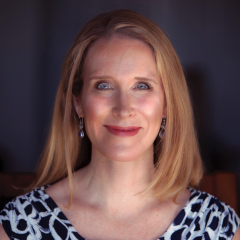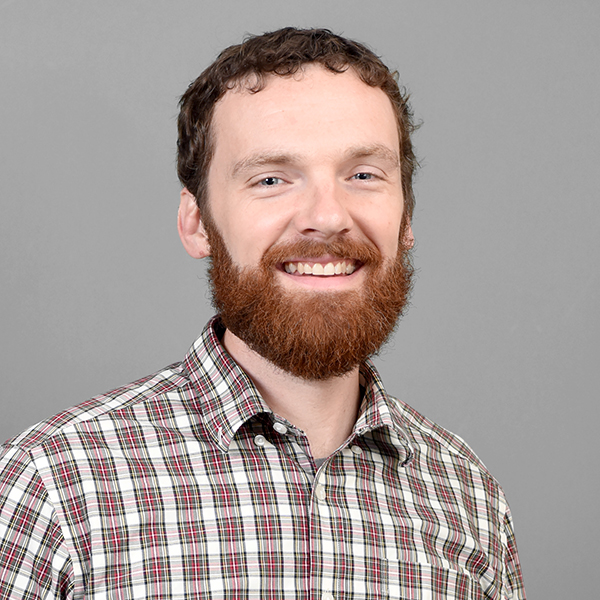Editor's note: This story is being highlighted in ASU Now's year in review. Read more top stories from 2019.
Depending on who you ask, happiness can be a lot of things.
The Dalai Lama might tell you that happiness is the practice of compassion.
A song by soul legend Al Green tells us it’s “when you really feel good about somebody.”
If you ask an average Joe, they could tell you it’s tied to their life circumstances.
But scientifically speaking — it's a mix.
“Research suggests that about 40 percent of our well-being and happiness is within our control, something we can adapt through our actions and the way we behave,” said Sarah Tracy, Herberger Professor of organizational communication and qualitative methodology at Arizona State University’s Hugh Downs School of Human Communication.
“About 50 percent is genetic. And then only 10 percent of it is due to circumstances: things like how much money we have or how good-looking we are. We think it’s our circumstances that make us happy, but it‘s really only a small amount.”
The mere fact that the subject of happiness — what it is, how to get it, who deserves it — holds such a commanding presence in the human psyche suggests just how important it is to life itself.
In any case, the pursuit of it is considered a God-given right. So in the spirit of the new year and new beginnings, ASU Now asked a handful of professors from various disciplines how we might best go about that. It turns out that happiness has a lot to do with relationships — with each other, with the world around us and with ourselves.
Social happiness
Sarah Tracy
In her teaching, Tracy focuses on the 40 percent of our well-being and happiness that is within our control, and within that, specifically on communication. Since 2009, she has offered both undergraduate and graduate courses on the “Communication of Happiness.”
The goal of the course is to help students think about ways to build happiness in their life.
“A lot of the things we can do in the world to improve our happiness, which is also called subjective well-being, are things that are learnable,” she said.
Students learn to build on skills they already have, like expressing gratitude by being more conscious of saying thank you in everyday life. Other assignments range from joining a club to planning a family get-together where you interact in ways you haven’t before.
“The happiest people in the world are those that have a rich social life,” Tracy said.
There’s also a whole section on coping with anxiety, which Tracy cautions can be brought on by too much social interaction, often in the form of social media, and can cause an unhealthy preoccupation with comparison.
“Social comparison is a killer of happiness,” she said, “and social media is a huge tool of social comparison.”
Tracy teaches students methods they can use to make that kind of anxiety more manageable, such as writing through it, meditating, exercising (she calls this “the quickest mood enhancer) and simply unplugging for a while.
“The skills it takes to increase happiness aren’t complicated, but they take discipline. It’s like a situp; it’s not complicated, but it takes discipline to do it enough to make a difference,” she said.
Environmental happiness
Scott Cloutier
As an environmental engineering undergrad, ASU sustainability Assistant Professor Scott Cloutier became frustrated with a class project that asked students to think about how they would build a water treatment plant. Not because it was difficult, but because he was only asked to consider the logistics, not the people who would be using them, working in them and living with them in their communities.
“I started thinking,” he recalled, “‘If I was an engineer, what would I design for?’ Happiness.”
After that revelation, Cloutier designed his doctoral dissertation around building a happy neighborhood.
At ASU, he leads the Sustainable Neighborhoods for Happiness project and has developed the “Sustainability Through Happiness Index,” a tool that allows planners to engage with neighborhood residents and collaborate to better understand and implement changes that will create happy places to live.
“When we design for pleasure, we’re wasteful. And people confuse happiness with pleasure,” he said.
In Tempe, for example, Cloutier explained, “we could easily go to Mill Avenue, eat all kinds of food, get drunk and buy all kinds of stuff. But there are a lot of consequences to that kind of pleasure-seeking, instant-gratification way of living, environmentally and socially.”
Consequences like gentrification and damage to natural habitats.
Through the Sustainable Neighborhoods for Happiness project, Cloutier has worked with communities in locales as far-flung as Mexico, Bolivia and Denmark. And while the factors that determine what makes a happy place to live can vary based on culture and economics, there are plenty of similarities: a sense of safety and belonging, environmental design that promotes social interaction and access to open and green spaces.
“Some of the happiest places are where people lose their sense of self and instead consider themselves part of something bigger,” he said. “If we think of happiness as coming from having a deep connection with nature and the natural cycle of the world around us, we can start to move toward a more sustainable future.”
Individual happiness
Shannon Tromp
Positive psychology, a relatively new area of focus within the broader field of psychology, has been gaining traction in recent years. It posits that we can scientifically quantify and predict happiness by measuring and learning from how various cultures define life satisfaction and well-being.
Shannon Tromp, a lecturer in the School of Social and Behavioral Sciences at ASU’s New College of Interdisciplinary Arts and Sciences, has been teaching a course on it for about a year.
“It allows students to focus on the areas of the field that relate to the actual mechanics and components of what makes us happy, what makes life good,” she said.
Students learn about the historical and cultural differences related to the idea of happiness, and also try out personal life-enhancing techniques for themselves, such as meditation, gratitude journals and affirmations.
“As an example,” Tromp said, “applying aspects of character virtues (such as integrity, tolerance, zeal), spirituality and appreciation, and engaging in service to others are all things that show up again and again as being consistent with improving life satisfaction.
“Understanding how those variables can apply universally or cross-culturally can help an individual modify their own experience and make positive change in their own lives.”
Top photo by Pixabay
More Science and technology

ASU professor breeds new tomato variety, the 'Desert Dew'
In an era defined by climate volatility and resource scarcity, researchers are developing crops that can survive — and thrive — under pressure.One such innovation is the newly released tomato variety…

Science meets play: ASU researcher makes developmental science hands-on for families
On a Friday morning at the Edna Vihel Arts Center in Tempe, toddlers dip paint brushes into bright colors, decorating paper fish. Nearby, children chase bubbles and move to music, while…

ASU water polo player defends the goal — and our data
Marie Rudasics is the last line of defense.Six players advance across the pool with a single objective in mind: making sure that yellow hydrogrip ball finds its way into the net. Rudasics, goalkeeper…





